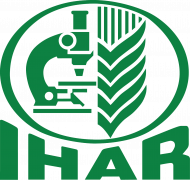Abstract
When frying foods, volume changes appear as shrinkage that can affect their physical properties including density and porosity, which are both important factors for heat and mass transfer. Challenges faced in heat and mass transfer while processing foods are associated with shrinkage. It is thus necessary to analyse and quantify structural changes in foods (such as shrinkage) to better understand the transfer mechanisms and their modelling. The use of ultrasound pretreatment is a promising method to improve the qualitative and quantitative properties of fried products, including decreased sample shrinkage rate. In this regard, the effect of ultrasonic pretreatment at two frequencies (20 and 40 kHz) for 15 min on the moisture content (MC) and shrinkage of potato slices, which were deep-fried at 175 °C and 195 °C for 3, 4 and 5 min, was investigated. The samples pretreated at 40 kHz had lower MC and shrinkage than the other samples. Sample MCs decreased with temperature and frying time but shrinkage increased. Six models were used for predicting shrinkage in samples. The best model (a rectangular hyperbola) was selected based on R2 and \( {\mathcal{X}}^2 \) and its coefficients were quantified using nonlinear regression analysis.















